Amy Stephens
MS, RDN, CSSD, CEDS
Licensed dietitian
specializing in sports nutrition
and eating disorders
MS, RDN, CSSD, CEDS
Licensed dietitian
specializing in sports nutrition
and eating disorders
Athletes often lose a significant amount of sweat when working out, especially in the summer months. Because sweat contains electrolytes, it’s essential to replace them to maintain proper hydration and muscle function. This ensures you perform at your best and recover eectively.
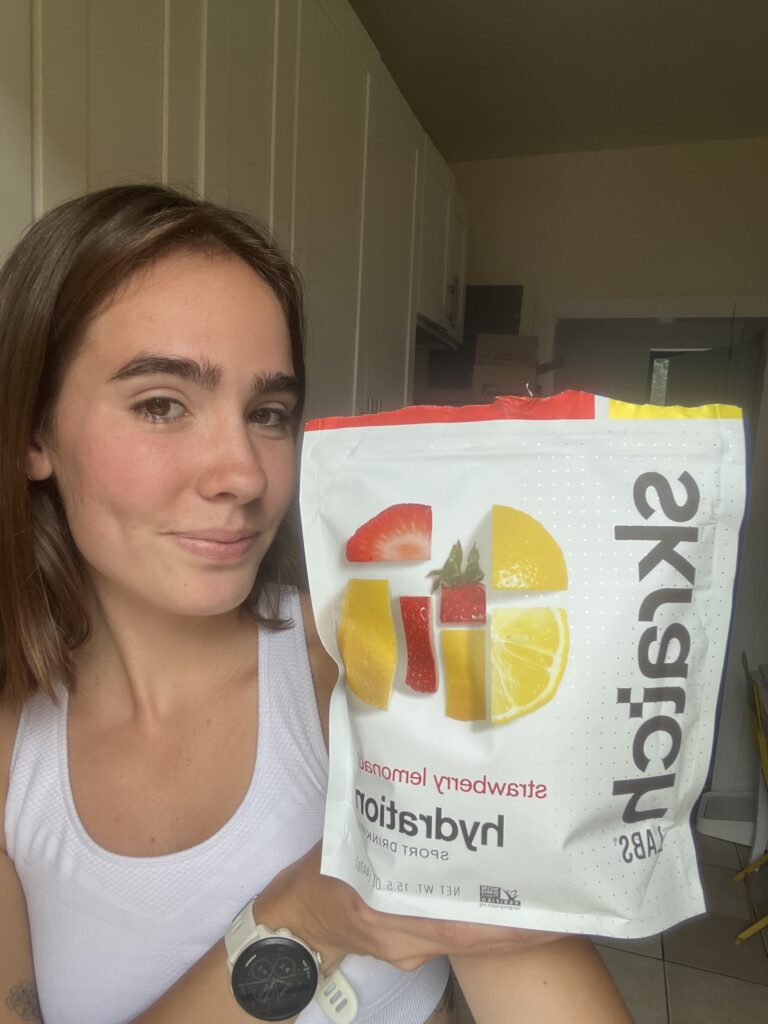
What Are Electrolytes?
Electrolytes are essential minerals responsible for regulating bodily fluids, enabling muscle contractions, and assisting nerve function. They attract water and distribute it to areas in the body where it is required most. Furthermore, electrolytes play a crucial role in transmitting electrical signals that govern muscle movements, ensuring coordinated actions and proper heart function. Key electrolytes include:
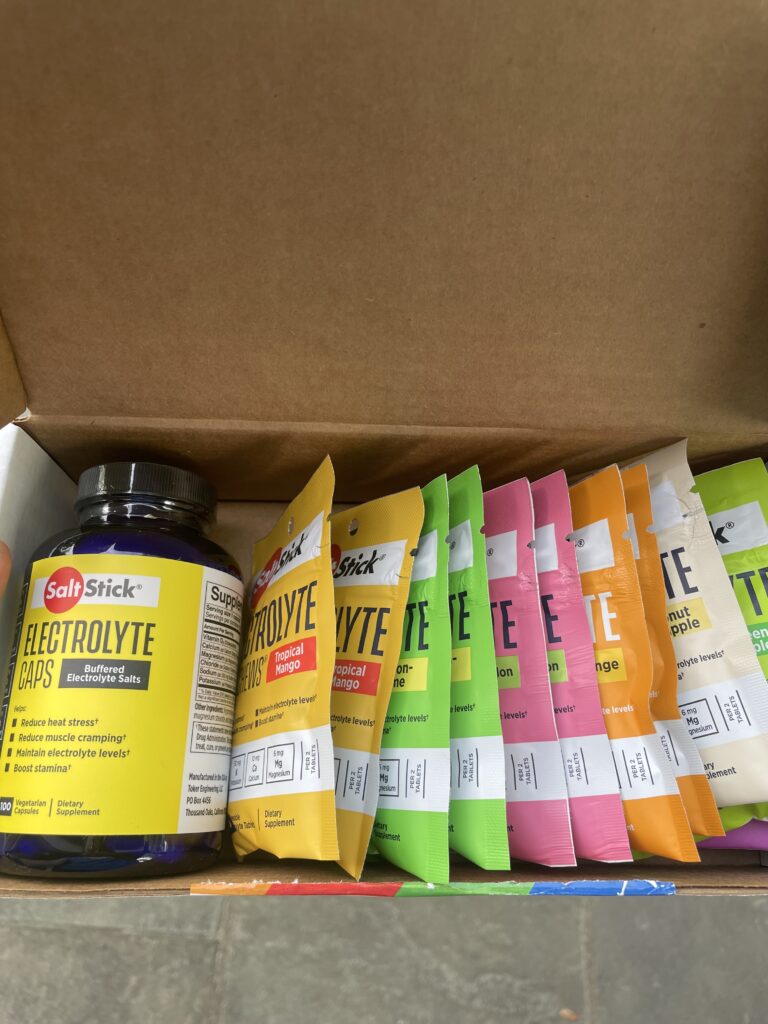
How Are Electrolytes Lost?
Sweat consists of water and electrolytes, including sodium, potassium, magnesium, and calcium. When you exercise, get hot, or feel stressed, your body sweats to cool down, losing electrolytes in the process. Sodium and chloride are lost the most, which is why sweat tastes salty, but smaller amounts of potassium, magnesium, and calcium are also lost.
How Do I Know When To Replace Electrolytes?
The amount of electrolytes you lose depends on factors like exercise intensity and duration, the weather, and your individual sweat rate. Here are some signs that you might need to replace electrolytes:
● You’re a salty or heavy sweater
● You experience frequent cramping during and after exercise
● You have a low-salt diet
How Much Electrolytes Do I Really Need?
The amount of sodium loss from sweat varies from person to person. For exercises lasting more than an hour, it’s important to replace electrolytes. For shorter activities, replenishment isn’t usually necessary unless temperatures are very high and you’ve sweated excessively. A good starting point is to aim for 300–500 mg of electrolytes per hour of exercise, mixed into 12 to 16 fl oz (350 to 500 ml).
On warm days, sip an electrolyte drink or consume a salty breakfast to prepare.
Gatorade makes a sweat patch that measures sweat loss to help you understand your electrolyte needs. You wear the patch while working out, and then after you’ve finished you can scan the patch within the Gatorade Gx app to find out what was lost and what needs to be replenished.
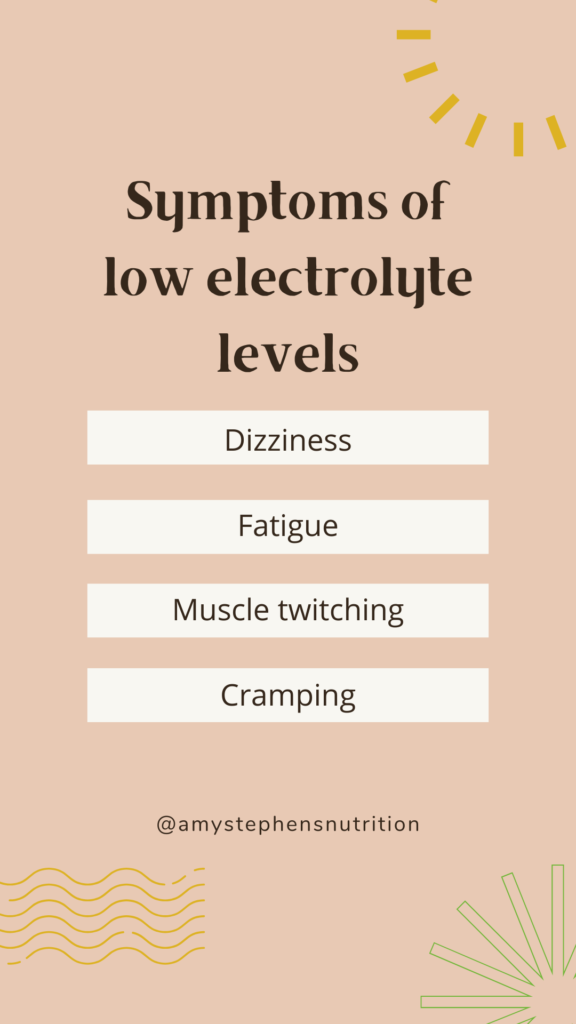
Can you over-do electrolytes?
The amount of sodium loss from sweat varies from person to person. For exercises lasting more than an hour, it’s important to replace electrolytes. For shorter activities, replenishment isn’t usually necessary unless temperatures are very high and you’ve sweated excessively. A good starting point is to consume 300-500 mg of electrolytes for every hour of exercise.
Some signs and symptoms of too much electrolytes:
● Elevated heart rate
● Headache
● Breathing difficulties
● Nausea and vomiting
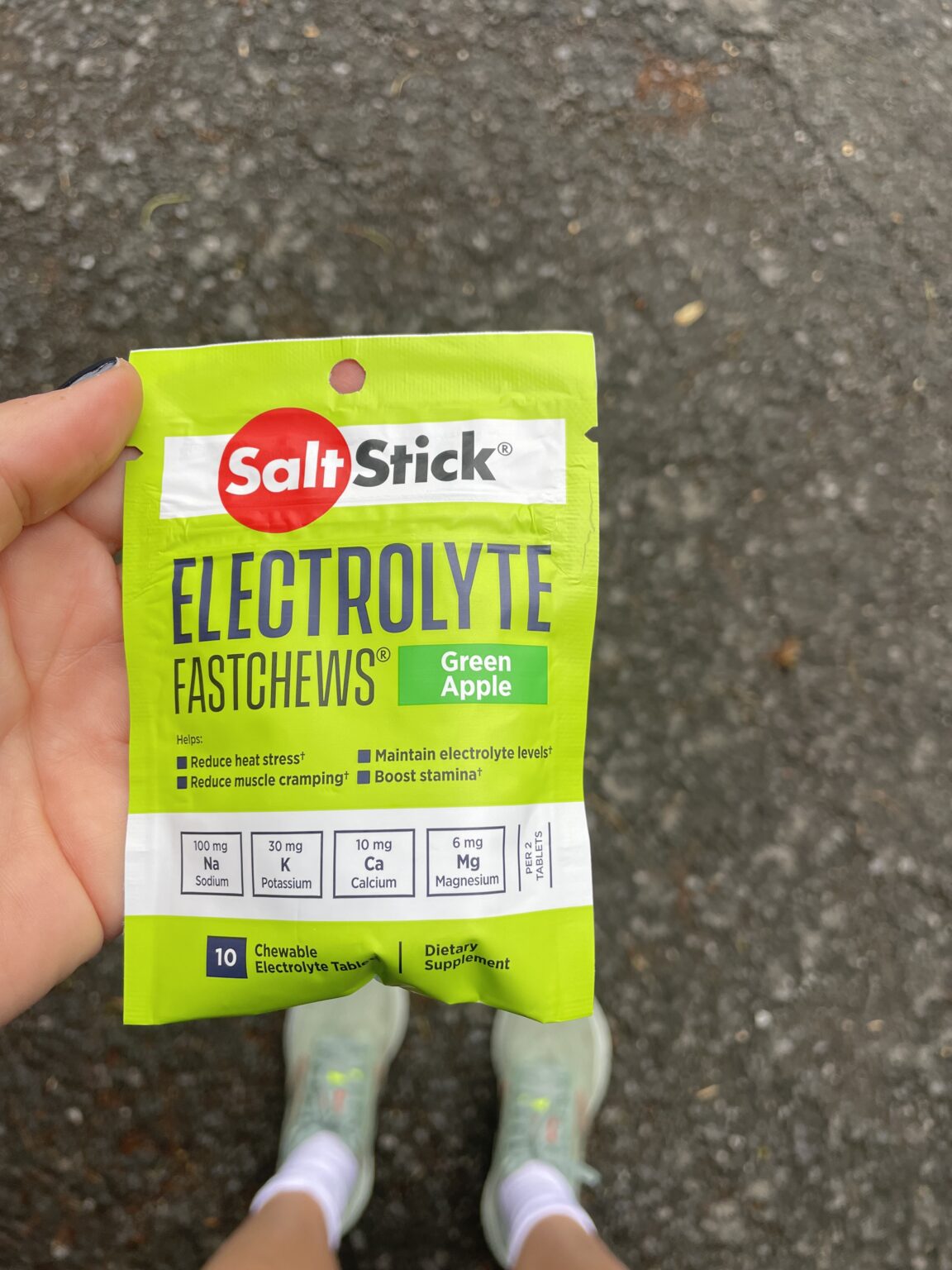
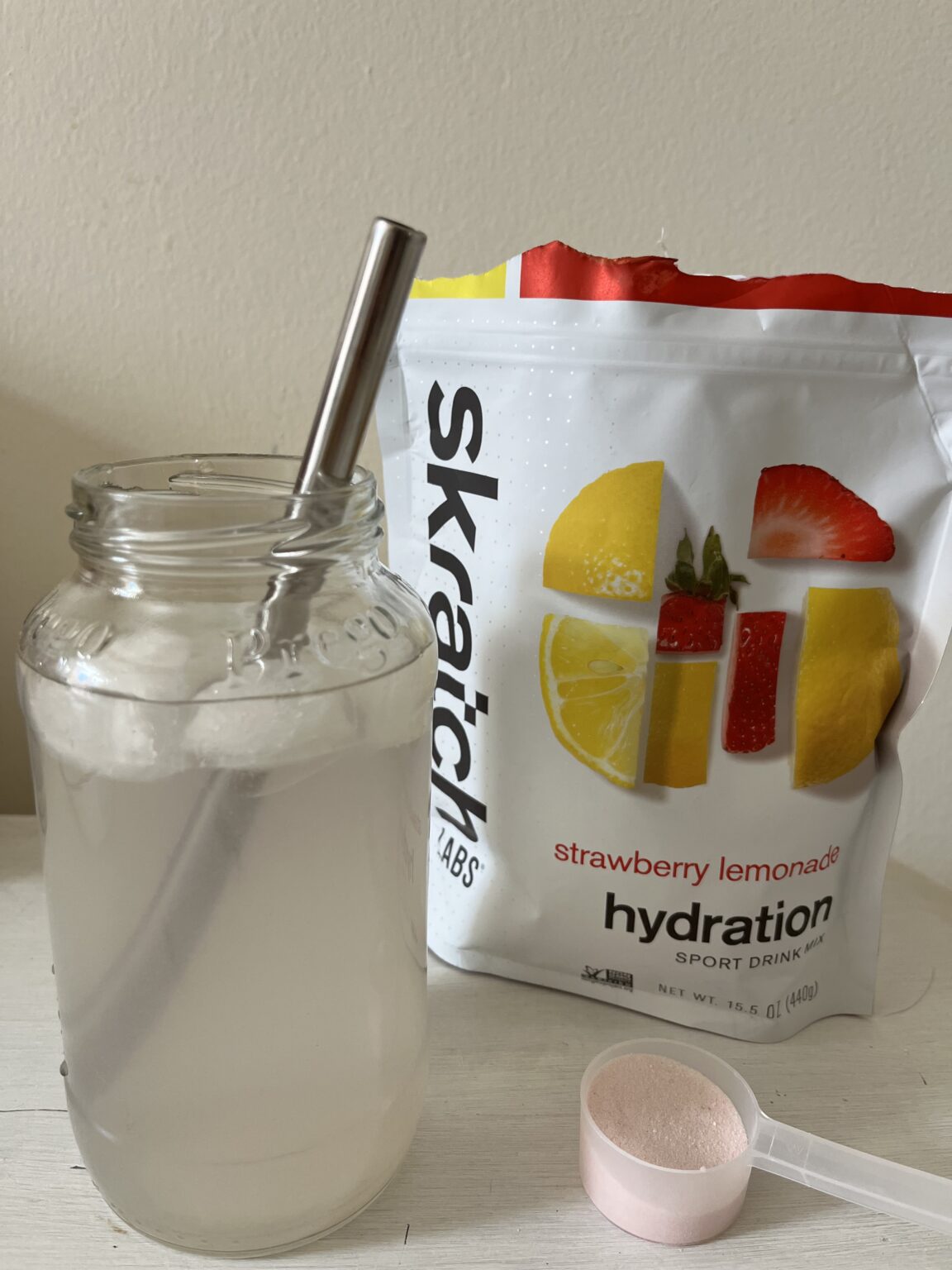
What Are the Best Ways to Get Electrolytes?
Here are some great options for replenishing electrolytes:
● Skratch Labs Hydration Sports Mix: Contains a substantial amount of electrolytes and 20 grams of carbohydrates for recovery.
● Gatorade Endurance Formula: Replenishes electrolytes and carbohydrate stores.
● Homemade: Add 1⁄4 teaspoon of salt to Gatorade for a fast and inexpensive way to replenish electrolytes.
● Nuun and LMNT: Reliable sources of electrolytes, but pair them with a carbohydrate-rich food or drink after a run as they contain only 2g of carbohydrates per serving.
● SaltStick Electrolyte pills & GU Electrolyte Capsules: Convenient option for replenishing sodium.
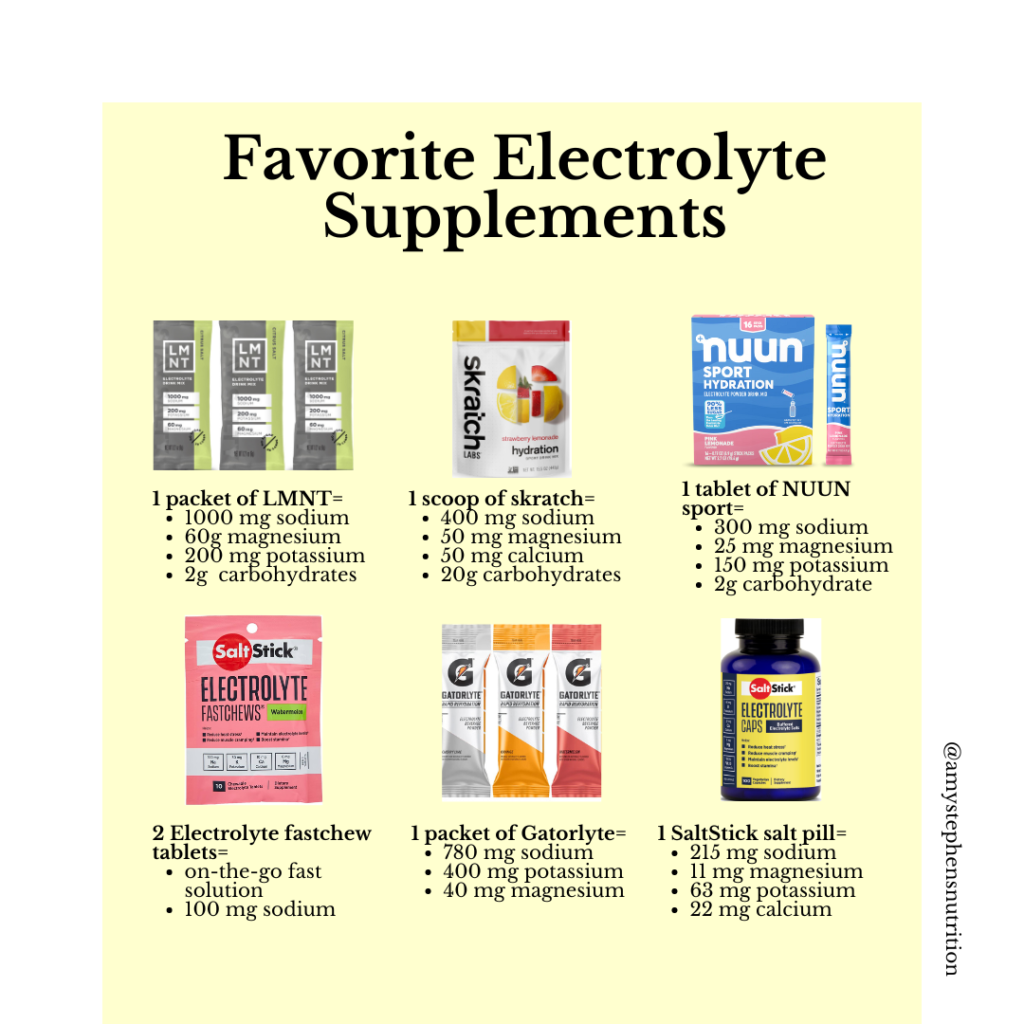
Typical Fueling Guideline for Endurance Races
● Sip water or an electrolyte beverage throughout the day.
● About an hour before the race, sip 10-20 oz of fluids.
● During an endurance event, consume 300 mg of electrolytes per hour and 4 – 7 oz fluid every 20 minutes. You might need more or less depending on the weather, exercise intensity, and body mass.
● After you’ve raced, replenish lost fluids by drinking 16-33 oz until your urine is pale yellow.
References
Armstrong LE. Rehydration during Endurance Exercise: Challenges, Research, Options, Methods. Nutrients. 2021;13(3):887. Published 2021 Mar 9. doi:10.3390/nu13030887
Sports and hydration for athletes: Q&A with a Dietitian. Johns Hopkins Medicine. October 30, 2023. Accessed June 5, 2024. https://www.hopkinsmedicine.org/health/wellness-and-prevention/nutrition-and-fitness/sports-and-hydration-fo r-athletes.
Orrù S, Imperlini E, Nigro E, et al. Role of Functional Beverages on Sport Performance and Recovery. Nutrients. 2018;10(10):1470. Published 2018 Oct 10. doi:10.3390/nu10101470
SEO J. The science of hydration: How electrolyte drinks enhance athletic performance and endurance. eLoad Sport Nutrition. February 21, 2024. Accessed June 5, 2024. https://eloadsportnutrition.com/the-science-of-hydration-how-electrolyte-drinks-enhance-athletic-performance -and-endurance/.
Shirres SM, Sawka MN. Fluid and electrolyte needs for training, competition, and recovery. J Sports Sci. 2011;29 Suppl 1:S39-S46. doi:10.1080/02640414.2011.614269